Believe it or not, the state of Arizona is full of tiny towns. While the largest city in Arizona, Phoenix, may have a population of around 1,644,409 people, some of the smallest towns have less than 100 people. However, there’s one town in particular, the smallest town in Arizona, with so few people that the entire year-round population could fit on a bike!
Ready to learn about the smallest town in Arizona? Keep reading below!
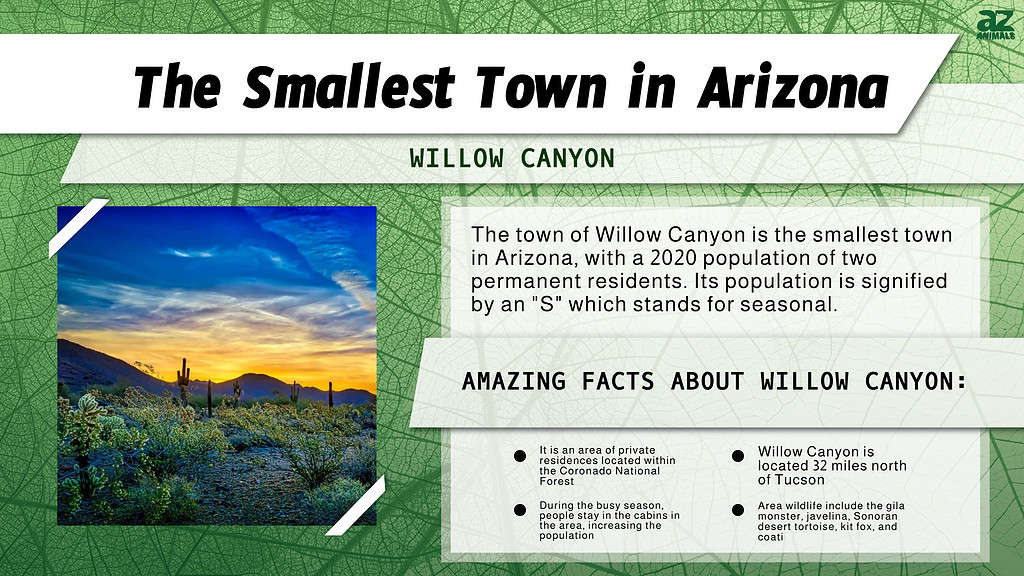
The Smallest Town in Arizona
Have you ever seen a town so small that it technically doesn’t have a population? Look no further than Willow Canyon, the smallest town in Arizona. In the 2010 census, Willow Canyon had its population listed as “S” for seasonal. However, some records have also shown a population of one for the 2010 census. As of the 2020 census, the town had a population of two!
Because of this, the entire population of the smallest town in Arizona could fit on a bicycle, whether that’s your average bike or a tandem bike. However, during the busy season, when people stay in the cabins, the population can increase greatly. However, permanent residency still averages around one or two people, according to the last few censuses to be conducted.
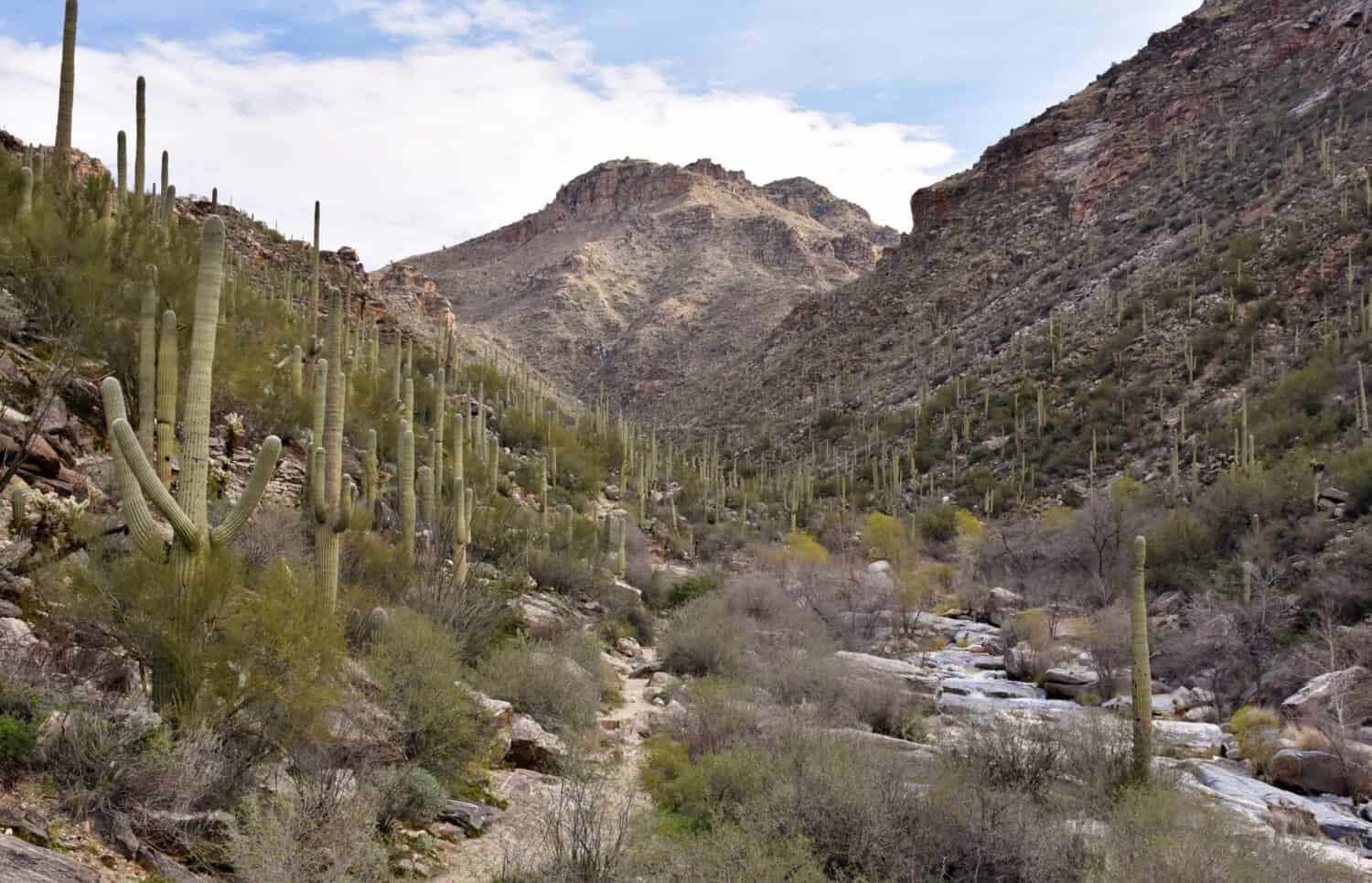
The smallest town in Arizona is a small group of private homes in Coronado National Forest.
©Michael Fitzsimmons/Shutterstock.com
Where Is Willow Canyon?
Willow Canyon is a census-designated place in Pima County. This town is an area of private residences located within the Coronado National Forest. It is 157 miles southeast of Phoenix, Arizona. It is only 32 miles north of Tucson. Its coordinates are 32°23′19″N 110°41′55″W.
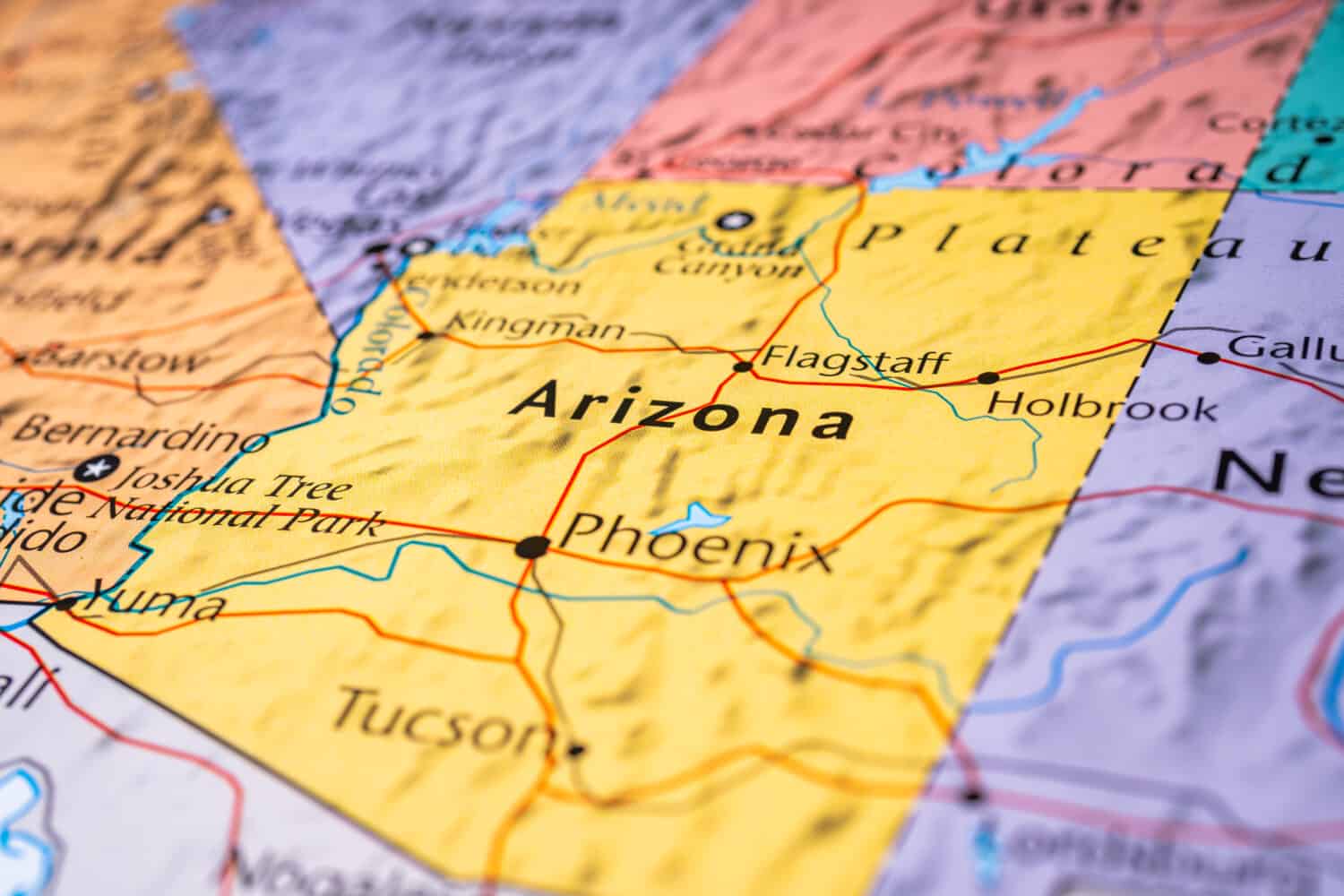
Willow Canyon is located less than an hour north of Tucson.
©Alexander Lukatskiy/Shutterstock.com
Wildlife Near Willow Canyon
Arizona is a state rich in natural sights and an abundance of biodiversity. Below, you’ll meet some of the most interesting species you can expect to spot around the smallest town in Arizona and the surrounding areas.
Gila Monster
The Gila monster (Heloderma suspectum) is a venomous species of lizard native only to the southwestern United States and certain parts of Sonora. It is the only venomous lizard species native to the United States, although it is not the only venomous reptile. This lizard is heavy and slow-moving, with a sluggish nature. As a result, although they can pack a venomous bite, they are rarely a threat to humans.
The Gila monster is a protected species in Arizona because of its near-threatened status. However, despite these regulations, many people still kill Gila monsters out of fear.

The Gila monster is one of the top reptiles to see in the smallest town in Arizona.
©Vaclav Sebek/Shutterstock.com
Javelina
The javelina (Tayassu tajacu) is also known as the collared peccary. They group together in large herds. Usually, these herds average no more than ten individuals, but they have been known to form groups that contain up to 53 other javelinas. These groups will each defend their own territory, in which the herd members can sleep and feed.
Arizona is one of only three states in the United States where you can find this species of animal. They inhibit a wide variety of different habitats, including those found in and around Willow Canyon.

Javelina groups defend territories in the national park surrounding Willow Canyon.
©Dennis W Donohue/Shutterstock.com
Sonoran Desert Tortoise
The Sonoran Desert tortoise (Gopherus morafkai) is also known as Morafka’s desert tortoise. This species is native only to the Sonoran Desert, for which it is named. It wasn’t until 2011 that different types of genetic testing and research were able to distinguish two different species of desert tortoise.
The new turtle to emerge from this research, the Sonoran Desert tortoise, was named for the late Professor David Joseph Morafka of California State University. This is thanks to Morafka’s significant contributions to the associated research.

This tortoise is found only in the Sonoran Desert.
©Sean R. Stubben/Shutterstock.com
Coati
Coatis, also known as coatimundis, are mammals in the genera Nasua and Nasuella. The species you’re most likely to encounter in the regions surrounding the smallest town in Arizona is the white-nosed coati (Nasua narica). This is because it is the only species located in the United States.
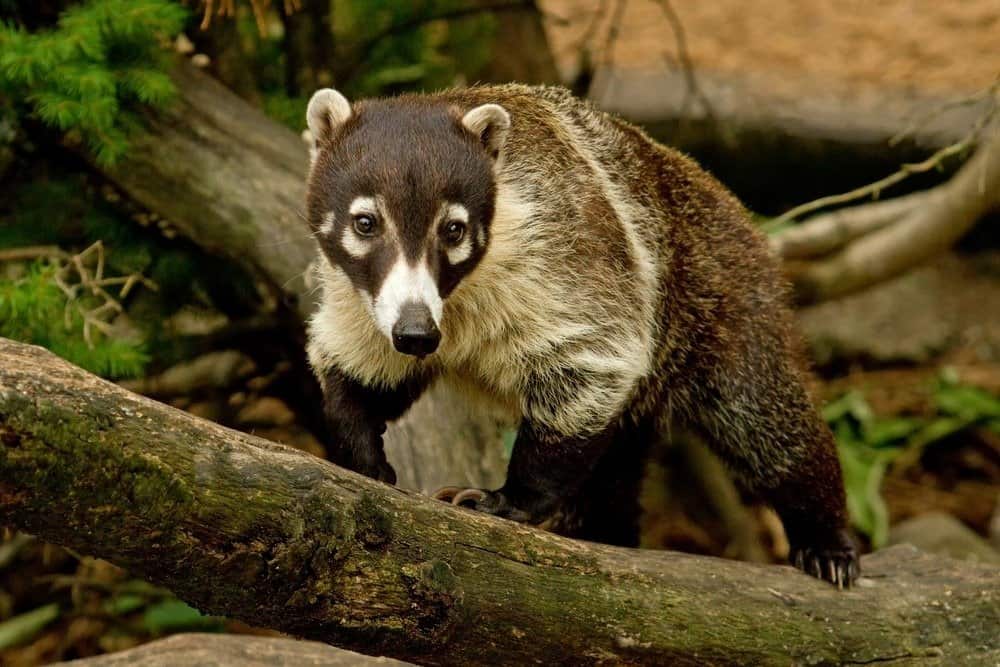
Coatis are one of the strangest mammals you may see in Arizona!
©Cynthia Kidwell/Shutterstock.com
Kit Fox
The kit fox (Vulpes macrotis) is a popular species to spot for those visiting Arizona. They are the smallest species of fox in North America. They are also one of the smallest species in the world. Many people call the kit fox the fennec of North America because of how similar their appearances are.

This Arizona native is referred to as the fennec fox’s North American counterpart.
©Swaroop Pixs/Shutterstock.com
Montezuma Quail
The Montezuma quail (Cyrtonyx montezumae) is a secretive little species of quail that you would be lucky to see during your visit to Willow Canyon. They inhabit only a small range in the state, with the area around the smallest town in Arizona being part of the northernmost extent of their range. There is also only one of the subspecies native to the United States.
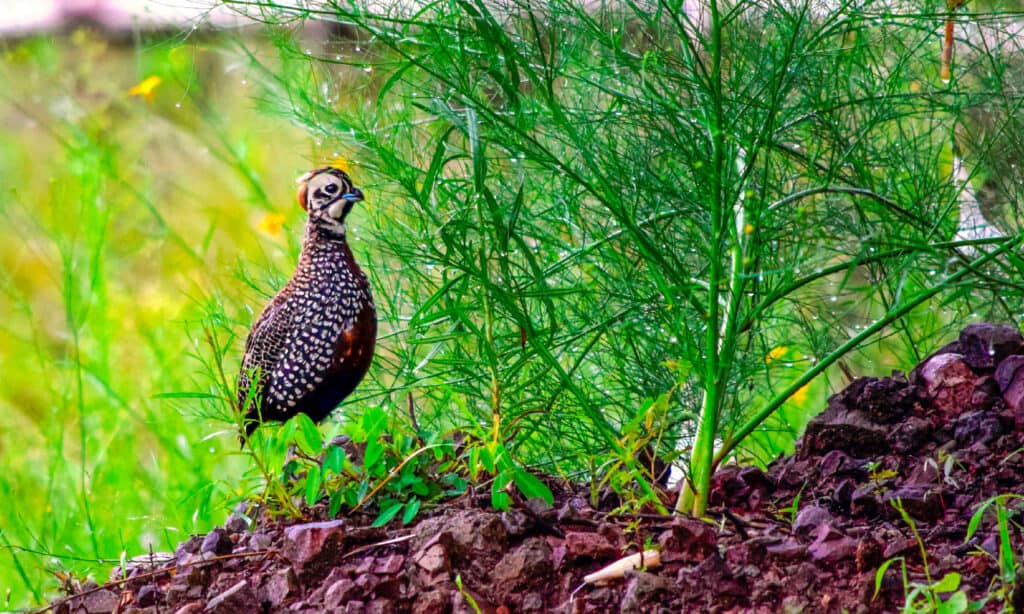
If you stay in Willow Canyon for a few days, you may be able to catch sight of this clandestine quail species.
©Ronny Wolf/Shutterstock.com
The photo featured at the top of this post is © Tim Murphy/Shutterstock.com
Thank you for reading! Have some feedback for us? Contact the AZ Animals editorial team.






